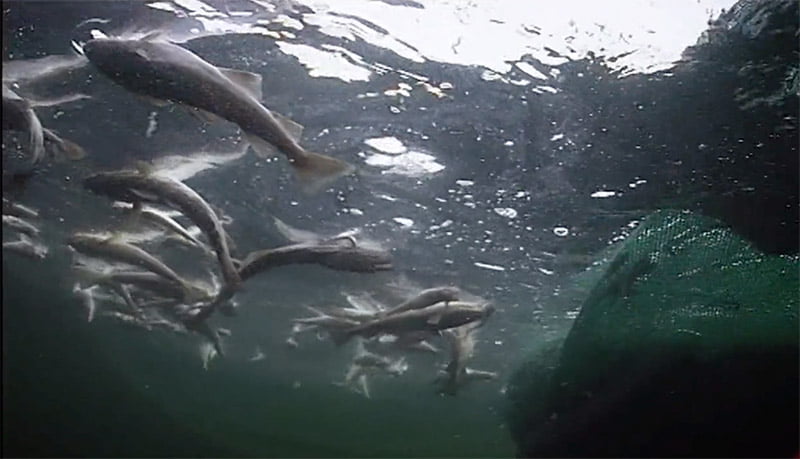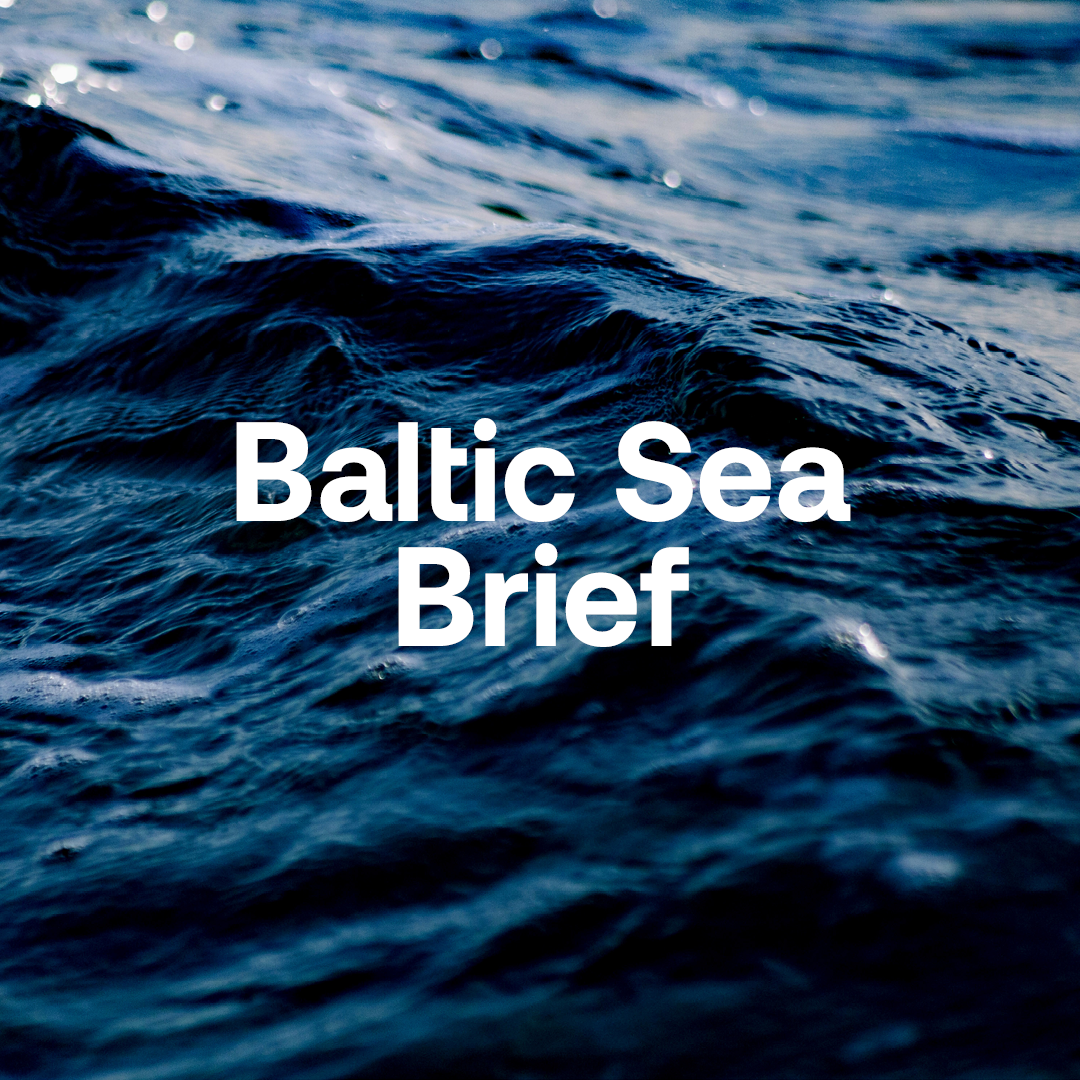Expensive and ineffective fisheries control
The Swedish Agency for Maritime and Water Management’s costs for fisheries control amount to SEK 100 million, which corresponds to almost one eighth of the landing value of Swedish fisheries. However, the total cost of fisheries control is even higher, as the sum does not include costs for other authorities, such as the Coast Guard. Besides being expensive, fisheries control is also inefficient, as both discards and misreporting are common.

At the end of 2020, a government assignment was reported in which the Swedish Agency for Marine and Water Management (SwAM) together with the Coast Guard described major problems along the entire fisheries control chain, not least in bottom trawling and migratory trawling.
In large-scale industrial fisheries, misreporting of catches is more the rule than the exception, which can have a major impact on a fish stock given the volume of fish caught. Among smaller vessels using trawl gear, a significant part of the catch is still thrown overboard, known as discards. Discarding continues to be a major problem despite the fact that an EU law on the obligation to land requires caught fish to be brought ashore and recorded. According to sampling by SLU Aqua, only a fraction of discards, whether authorised or unauthorised, are recorded.
Impossible control at sea
Surveillance at sea is carried out by the Coast Guard using both ships and aircraft. This is costly and the authority is only able to monitor a small part of the fishery. In addition, checks on the vessels are difficult to carry out.
On the largest herring and sprat vessels, which together account for around 95 per cent of Sweden’s total catch, the catches have become so large that checking the cargo at sea is almost impossible. A source at the Coast Guard tells us that the inspectors have to rely on the captain’s logbook, both in terms of species distribution and how much fish has been caught. The inspectors do not look down into the tanks to see what is in the cargo:
“Even if we were to look down there, I don’t know what we could say. There could be hundreds of tonnes of fish, and it is impossible for us to analyse with the naked eye the amount of sprat, herring or by-catch. We simply have to take the captain’s word for it, but it is also perfectly legal for the captain to tell us one figure and then state something completely different in port,” the source said.
Control of the catch on the smaller vessels is easier, but the problem of discards is still high and the chance of detecting discards is very low. The fisherman can discard any by-catch when they are out of sight of the inspection vessel, and although aerial surveillance can be carried out without the fisherman’s knowledge, it is difficult to determine which fish are discarded due to the high altitude of the aircraft.
In addition, a very small part of the Swedish herring and sprat fishery is landed in Swedish harbours. Most of the catches are left in Denmark, which means that neither SwAM nor the Coast Guard is able to control the catch.
Misreported landings
Once the catch is landed, misreporting in the herring and sprat fishery also seems to be the rule rather than the exception. In a control operation in 2019, SwAM and the Danish control authority found that vessels were reporting what they were allowed to land based on their quotas, instead of reporting what was actually in the cargo. In one case, the fisherman reported that 70 per cent of the catch was herring, when in reality it was only 10 per cent. In all but two cases, the proportion of herring in the catch had been overestimated.

Quantities of estimated herring in the logbook compared to what was found by sampling during inspection. Source: HaV
In industrial fishing, the catch is landed unsorted and is usually pumped directly from the vessels’ tanks for weighing. In order to determine species, random samples need to be taken, but SwAM has found that this is generally not done. SwAM writes in the submitted government assignment that, “even if there are no explicit requirements for sampling, it can be questioned what the information provided is based on – in cases where no sampling of the catch has been carried out”.
Landings figures are thus unreliable, which has implications for scientific advice, which is partly based on logbooks and landings data. If the landing reports are inaccurate, it means that the basis for science is wrong, which can lead to an overestimation of the availability of a species. This type of error contributed, for example, to the International Council for the Exploration of the Sea (ICES) estimating in 2017 that the spawning biomass of herring in the central Baltic Sea was 1.3 million tonnes, while updated figures suggest it was more like 0.6 million tonnes. The stock has been heavily overfished for several years, and the the stock level is now among the lowest in history. (Processed data from ICES).
Exemptions and ineffective control dilute species protection
In the herring and sprat fisheries, the proportion of by-catch is not estimated to be very large in relation to the total catch, but as the catches are large, there is still a significant amount of incorrectly caught fish.
Despite awareness of the major problems, the large-scale herring and sprat fishery has been granted derogations that allow more deviations in their catch than other fisheries, which is difficult to understand given the scale of the fishery and the negative development of stocks in the central Baltic Sea.
Thus, fisheries control is both expensive and inefficient. The costs include not only staff, but also expenditure on vessels, aircraft and electronic equipment. For HaV, the costs for fisheries control in 2019 totalled SEK 97 million. The Coast Guard is not able to report its fisheries-related costs, but they can be assumed to be high.
| Area/action | Cost (SEK million) |
| Landing control | 23,2 |
| Monitoring | 16,7 |
| Evaluation | 12,8 |
| Legal support/overall coordination | 4,0 |
| IT development | 40,1 |
| Total | 96,9 |
Improved fisheries control would require additional resources. In the government assignment, the Coast Guard reported a need for an additional SEK 18.5 million annually, while SwAM requested an additional SEK 14 million annually, excluding the cost of introducing Remote Electronic Monitoring (REM) on vessels, a cost estimated at about SEK 100,000 per vessel.
One question that voters and the government should ask themselves is why the state’s control measures amount to over SEK 100 million, when they still do not achieve their objectives and the landing value of the catch is SEK 839 million. The question is which measures are most important – more resources for control, or tougher rules for the industry, severe sanctions for violations and minimised exemptions?

Small-scale fisheries – easier and cheaper to monitor
Fisheries control is a good example of how fisheries policy consists largely of talk rather than action. Large budget allocations for monitoring and control give signals of decisive action, but the money does not help. The deficiencies in control create problems for both the environment and management, not least because the information on what and how much is actually fished is often incorrect – which ultimately contributes to incorrect decisions being made for future years’ catches.
SwAM and the Coast Guard propose additional resources for the authorities, that vessels should start REM monitoring and that the regulations regarding weighing and species composition tests should be developed. The Coast Guard also asks that the exemptions issued by SwAM be minimised. These are important measures, which for the sake of the environment and stocks must be supplemented by reduced fishing pressure.
As long as the current regulatory framework for fisheries is in place, monitoring will continue to require significant resources. If fisheries were to be converted to locally based, small-scale fisheries, fisheries control would be simpler and probably much cheaper.


